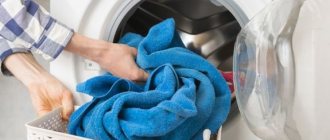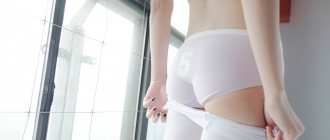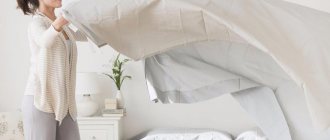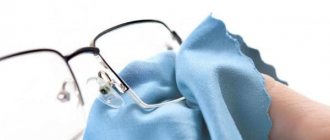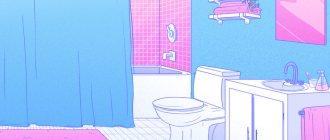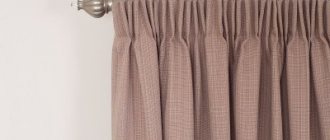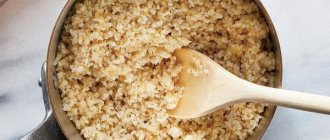Everyone’s idea of cleanliness is different, and we most often determine the need for cleaning by eye. Most recommendations for keeping a tidy home are based more on the experiences of past generations than on scientific evidence.
At the same time, we clean not only for the sake of beauty, but also in order to get rid of pathogenic microorganisms. And how long do microbes like bacteria and viruses live on surfaces in the home at normal room temperatures? / Popular Science different microbes have different life cycles, which is important to consider to maintain cleanliness.
Microbiologist Jason Tetro and tidying expert Becky Rapinchuk told How often you should wash everything in your home, according to science / NBC News, how often you should clean and why.
Bed sheets
Microorganisms that accumulate on the bed fall on it with dust and are considered relatively harmless.
But sweat, saliva and other human body secretions remaining on sheets and pillowcases are an excellent breeding ground in which bacteria, dust mites and other living creatures quickly multiply AA Woodcock, N. Steel et al. Fungal contamination of bedding/Allergy.
Therefore, bed linen must be changed once a week, or at least once every two weeks. It is better to wash sheets, duvet covers and pillowcases at high temperatures - from 60 ° C and above, unless otherwise indicated on the labels.
How to clean different floors
The covering chosen for the floor requires an individual approach in terms of cleaning. Some materials are sensitive to products containing acids in their composition, while others are afraid of alkaline ones.
Regardless of the floor covering, there are several rules for wet cleaning.
The most popular types of coatings deserve special attention and detailed consideration.
Laminate
Laminate floors should be washed carefully, without overdoing the amount of water. The material is as whimsical as wood for this parameter. Special, narrow-profile products are offered for them. Otherwise, mop the floor using movements as if drawing a figure eight.
Laminate is resistant to scratches and excess water.
But what exactly cannot be done:
- use abrasive substances;
- Solvents and universals are prohibited;
- polish and wax
From folk remedies for this material, you can prepare a special solution: water, vinegar and dishwashing liquid in proportions 3:1:1. It will completely help get rid of pollution.
Linoleum
There are different types of linoleum. For example, the surface can be smooth, grooved or rough, with or without patterns. It would seem that the material is quite durable and unpretentious. But there are nuances.
This type of flooring attracts with its practicality.
For example, it is not advisable to use solvents and hot water. Before washing linoleum with a corrugated surface, it is best to wet it and let it dry. It is allowed to use universal and specialized floor cleaning products.
Floorboards
Unpretentious material. It does not require special care. Washing is carried out using a damp flannel cloth and water. If cleaning is done daily, then detergents will not be needed.
Wooden floors are usually painted or varnished.
Otherwise, any all-purpose cleaner will do.
Parquet
Parquet floors are washed every 3-4 months. But you need to remember that this material is afraid of moisture. By following some rules, you can protect yourself from unpleasant surprises:
- after coating with varnish, you can wash the parquet floor no earlier than 3 weeks (it will take about this long for the cracks between the planks to close and for water not to get in);
- wash with warm water, use only specially designed products;
- cloth for washing: felt or felt (carefully wring out the cloth before wiping);
- You can dry the floors after washing, but it’s best to just wipe them dry.
Parquet, popular at all times, is extremely difficult to clean.
It is recommended that upon completion of cleaning, apply a special substance to the surface - a polish with a water-repellent effect. It is recommended to use detergent concentrates, which will allow you to clean without water.
Tile
Depending on the type of tile, methods for cleaning it are also selected. As a rule, the seams between tiles are the most susceptible to contamination. It is there that, due to the porous surface of the suture material, dirt particles can accumulate and be compressed.
The tiles can be washed with detergents.
To clean them, sometimes you can use an ordinary toothbrush if we are talking about a small area. Mold may appear in bathrooms. To combat it you need to use special means.
Self-leveling floor
The material is easy to wash. To do this, you can use both a steam mop and an ordinary mop. You can wash it with or without specialized substances. All-purpose cleaners are perfectly acceptable. After cleaning, you need to wipe the floors with a soft and dry cloth.
By following the rules for cleaning floor coverings, you can cope with this difficult job quickly and easily.
Sinks
They need to be washed and disinfected every day. Even if they look clean, microorganisms, including pathogens, actively multiply in them. Moisture, food debris, dirt that we wash off our hands after being outside or visiting the toilet - all this is created by K. Mattick, K. Durham et al. The microbiological quality of washing-up water and the environment in domestic and commercial kitchens / Journal of Applied Microbiology are excellent conditions for the growth of bacteria, including E. coli and salmonella.
So, at least once a day, you should wash your kitchen and bathroom sinks with a cleaner and treat them with a suitable household disinfectant.
Selection of washing equipment
The old methods, in the spirit of “pick up a rag and fight dirty floors” are no longer relevant. Nowadays there are many types of equipment for cleaning floors.
Choose quality floor cleaning equipment.
Let's figure out which of them are needed and why:
- Broom with dustpan. It is not always advisable to use a vacuum cleaner. Especially when it comes to removing wool from tiles, laminate and other smooth surfaces. A cheap and easy way to eliminate accumulations of dust, hair, and debris.
- Vacuum cleaners, steam cleaners. Modern cleaning technology is sometimes surprising. After all, the same vacuum cleaners with a wet cleaning function cope quite well with simple dirt and refresh the air in the room. Steam cleaners are used for professional and semi-professional cleaning. They disinfect the surface and effectively fight dirt with steam.
- Mop. In the usual sense, these are two wooden sticks fixed perpendicularly, on the smaller of which a rag of questionable freshness is hung. But modern mop models are radically different in functionality and ease of use. Most new mops have interchangeable heads for different types of cleaning.
- Scrubber dryers. They are purchased extremely rarely for private use, but in factories, supermarkets and large offices such equipment is necessary.
Today you can find many different mops.
It is important to know how to choose the right mop, as it is the main cleaning tool. To minimize back strain, the mop should be long enough to reach your armpits.
Plumbing in the bathroom
The bathroom is an ideal habitat for microorganisms. Moreover, they can spread Yes, poop particles spray into the air when you flush the toilet / SELF even at a distance of up to two meters from the toilet. So it needs to be washed and disinfected at least once a week, and the bathtub or shower stall at least once every two weeks.
Also, don't forget about the curtains: ST Kelley, U. Theisen et al. appears very quickly on them. Molecular analysis of shower curtain biofilm microbes / Applied and Environmental Microbiology mold, so they need to be washed and treated with a disinfectant at least once a week.
What to do daily
- To make one's bed;
- Put things in their places;
- Remove trash from your desk and other places;
- Lay out papers and documents after use;
- Wipe the bathtub, sink and shower stall dry after use;
- Wash the dishes;
- Wash and wipe down countertops, kitchen counters and kitchen sinks.
Towels
Bath towels collected by S. F. Bloomfield, M. Exner et al. The infection risks associated with clothing and household lines in home and everyday life settings, and the role of laundry / The International Scientific Forum on Home Hygiene many microorganisms, including staphylococcus, various fungi and E. coli. Therefore, experts recommend changing them daily.
Kitchen towels should be washed at least once a week. If you handled raw meat and then dried your hands on a towel, you should put it in the washing machine immediately.
Cleaning the floor after renovation
Repair is a painstaking, sometimes long-awaited undertaking. And when imagining the final result, few people think about the consequences of the repair. But construction debris, paint, varnishes and other complex stains are quite difficult to remove.
It is not easy to clean the floor after renovation.
It is best to take the following measures before starting repairs:
- lay an oilcloth on the floor, the denser the better;
- if you notice that paint or something else has gotten onto an open area of the coating, remove it immediately before the material gets eaten into it;
- Do not allow fragments of plaster to fall unless the cardboard is additionally shot through.
Otherwise, before washing the floors after renovation, the most important thing is to remove all dust and debris with a broom. Only then start washing.
Taking the right steps will help protect the material from which your floor is made,
If paint has dried on the tile, a little solvent will help solve the problem. On linoleum it’s the same, you can drop some kerosene or gasoline from a hardware store onto a rag.
Kitchen sponges
Experts advise boiling them on the stove or microwave for two minutes every two days. And replace them with new ones at least twice a month.
It is important to understand that washing or washing a sponge with soap and water does not help M. Cardinale, D. Kaiser et al. Microbiome analysis and confocal microscopy of used kitchen sponges reveal massive colonization by Acinetobacter, Moraxella and Chryseobacterium species / Nature get rid of microorganisms that accumulate in it. Therefore, sterilization or replacement is necessary.
When frequent wet cleaning can be dangerous
Studies have shown that excessively frequent cleaning using household chemicals is harmful to your health! In Norway, scientists monitored the well-being of an experimental group for 20 years and found that such people were more likely to develop asthma. Due to the irritating effects of household chemicals, housewives have a greatly reduced exhalation volume, which provokes pulmonary failure and asthma.
In the course of a European study, scientists came to the conclusion that due to the economic zeal of the subjects, their blood pressure was constantly elevated, and its jumps occurred more often than those who spent their leisure time playing sports or relaxing. It's all about the nature of the load, because throwing your head back, bending for long periods and other loads during cleaning have a bad effect on your health.
This is why you should trust cleaning to professionals from time to time to maintain your health and mood! With us you will deprive yourself of a lot of trouble and forget what dirt is!
Important Tips
When dry cleaning, you must remember the following rules:
Change the length of the pile and the type of brush when moving to another surface.- Do not vacuum wet floors or carpets.
- Do not fill the vacuum cleaner bag or container more than 2/3 full.
- Clean the vacuum cleaner brush after each cleaning, and during general cleaning - after each room.
- Monitor the condition of the filters.
- When cleaning the surface, go over the nozzle with an overlap.
- Before treating synthetic and wool carpet, treat it with an antistatic agent or diluted fabric softener (not required when using carpet cleaners).
To clean the carpet, you need to move the brush strictly along the fibers, but light movements to the sides will help fluff up the pile.
Which rag is better to wipe off dust, dry or wet?
You need to use a slightly damp cloth - this will collect dust most effectively. If you wipe it with a wet cloth, streaks will remain; if you use a dry cloth, dust particles will scatter throughout the room. Before wet cleaning, dry cleaning is carried out. You must first sweep the floor, vacuum the carpets and furniture.
Interesting materials:
How to find out your luck number? How to find out your debt from the courts? How to find out the temperature of a Ryzen processor? How to find out the exact model of an AMD video card? How can I find out if I have fat32 or NTFS? How can I find out which folder the application is in? How to find out how to enter Russia through the Federal Migration Service? How to find out the possibility of traveling abroad? How to find out about retirement? How can I find out if I will be released abroad?
